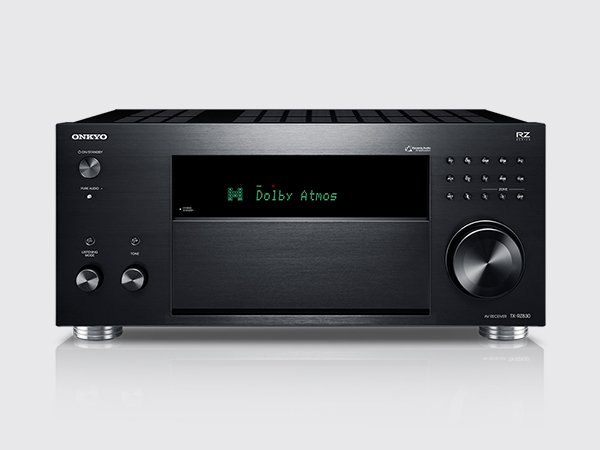The amplifier is the heart of every hi-fi system. Without it, the speakers remain silent. But what about the pre-amplifier? What is the difference between internal and external? We dedicate ourselves to this indispensable component and also take a look at its technical development.
The external variant in change
The preamplifier supports the work of the amplifier. It prepares the audio signals for the preamplifier in such a way that it can process the signals optimally. The little helpers are available as an internal version and as an external HiFi module.
As such the preamplifier was very common in the early days of the HiFi world. At that time it had a mainly practical task. Mostly source devices like record player, tape recorder or radio tuner were connected to it. With the help of a rotary switch or various knobs, one could choose between the individual devices and also regulate treble, midrange and bass.
This was the situation in the 1980s when the preamplifier’s controls resembled those of an aircraft cockpit. Today, many top-of-the-range preamplifiers only have two knobs: one for volume and one for channel selection. The different source devices are usually controlled by an AV receiver, audio and video receiver and amplifier in one device. Alternatively, you can use a control device, for example, if active loudspeakers are connected. But more about this later. Let’s stay with the pre-amplifier for now. Although it still exists today, it has become much rarer. When the first CD players with integrated volume control came onto the market, the pre-amplifier became superfluous for many people. Usually, only one source device was operated anyway, or the amplifier already had a switching option. So often the CD player was connected directly to the amplifier and even provided a better sound experience than with a pre-amplifier.
This, however, had mainly to do with the quality of the pre-amplifiers of that time. Even if no general statement can be made: the majority of models at that time produced rather poor results. Often the sound was tinny and unbalanced. Due to their connection possibilities, they were still in demand. However, since this function is no longer so important today due to the spread of AV receivers, external pre-amplifiers are becoming increasingly rare – except in the high-end sector. There a good – mind you a good – preamplifier still plays a decisive role. At least that’s the opinion of one camp of hi-fi experts. They are of the opinion that the sound quality is increased if a good pre-amplifier is placed between the source device and the amplifier. The other camp, on the other hand, promises a genuine and therefore very good sound experience by directly connecting the source device and amplifier. Here everyone has to decide for himself.
Loudspeaker from Teufel
[product id=”29058,27908,27916″]
Phono amps

There is another type of preamplifier that is still used today, especially with record players: the phono amp. All record players with moving magnet and moving coil systems require these special preamplifiers in order to boost the signal so that the actual amplifier is able to process it. Phono amps also equalize the signal.
Yet over the years, many manufacturers have included integrated phono amps in amplifiers or directly into the record players themselves. Amplifiers with integrated phono amps can be recognized by the presence of a phono input. A phono input is really a standard stereo cinch input that is typically labeled “phono.” This means that the signal entering this input will be enhanced. Should the record player have its own integrated phono amp, than the signal that it delivers should not be connected to a phono input on an amplifier. You can tell if your record player has an integrated phono amp by checking the user manual or finding the corresponding product description on the Internet.
As control devices
What many people take to be an amplifier is really nothing of the kind. Control devices may look like standard amplifiers or A/V receivers, yet their job is really to do what preamplifiers did back in the 1980s: They help manage the various source devices without actually amplifying any of the signals they deliver. Happily, this is not necessary today since control devices are typically used together with active loudspeakers; that is, loudspeakers that contain integrated amplification units. Such active loudspeakers often don’t include enough connections on their control panels which is where control devices come in.

Best sound and image processing: Our AV receivers
 Opens in new tab
Opens in new tab▶ Onkyo TX-RZ840: Home cinema evenings with the best video quality as well as listening pleasure via music streaming and turntable: The powerful 9.2 AV receiver has a lot to offer. The bundle with speaker and subwoofer channel can do even more.
▶ Impaq 8000 Blu-ray receiver: The sound and picture reproduction of this all-round solution is state-of-the-art. The 7.1 Blu-ray AV receiver includes CD and network players as well as radio.
Loudspeaker sets for home cinema
Conclusion
- A preamplifier ensures that a clean sound is produced at the end.
- External preamplifiers are not as important today as they used to be.
- Most pre-amplifiers are now built into integrated amplifiers or AV receivers or have been replaced by an external control unit.
- External models are only indispensable in the high-end HiFi sector as a quality assurance.
- In most turntables today the preamplifier is already integrated.
All pictures: Property of Teufel Audio
Header image Preamplifier: © „Quad 33 Front“. Licensed under public domain via Wikimedia Commons.
Image 1 record player amplifer: © „Phono-preamp“ from Arbeiterreserve – Own work. Licensed under CC BY-SA 3.0 via Wikimedia Commons.






